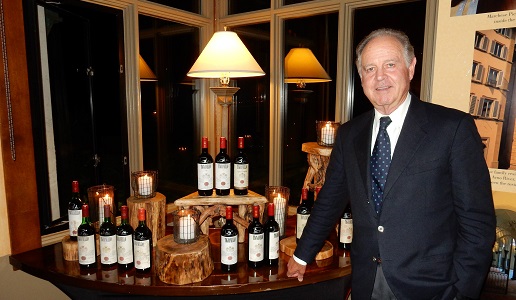Tignanello at 50

Tignanello got off to a slow start to then become an icon of Tuscan and Italian quality wine worldwide.
While it is true that the first, “official” Tignanello was a 1971, which would make the wine 49 years old, people my age can remember that already in 1970 a Chianti Classico Riserva del Podere Tignanello came out with the old white label that Villa Antinori used until the 1950s. The wine was supposed to represent both the rediscovery of the estate’s tradition and, at the same time, a technical evolution in regard to production. The fact is that this 1970 Riserva was a forerunner for what would become Tignanello and that was, obviously, already in the works for several years. And this is the reason why I consider this year to be the one that marks Tignanello’s half century and not 2021. That said, for what it’s worth, here I will try to explain the effect the arrival of a wine like this had on wine lovers like us in the mid-1970s.
At the end of the 1970s, Tignanello was an object of desire for us young wine lovers and we would split the cost of a bottle to be able to drink this great red Italy could be proud of. It was a very modern wine and, beginning with the ’71, it was made using only red grapes, for the most part Sangiovese with just a tad of Canaiolo. It was matured in 250l Slavonian oak barrels and not the classic and, for Italy, then relatively unused barriques, at least for that vintage, Giacomo Tacis told me many years later. The label was designed by the already famous graphic artist Silvio Coppola, who went on to design those for the wines of Ceretto and Felsina, with a truly revolutionary approach, so much so that little has been changed since. It was a “planned” wine with a marketing strategy aimed at differentiating it from Chianti Classico, which had lost some of its clout due to the policy of price slashing practiced on a wide scale by many industrial producers and bottlers.
Piero Antinori realized that what his and a few other estates were trying to do to boost the image and quality of their wines could not compete with this blatant commercial policy of offering wines that were a detriment to the appellation itself. What he and the others did set the stage for what the British writer and importer Nick Belfrage would coin as the Super-Tuscans.
This was the context in which Tignanello made its debut, a bit slow at the start given that the 1972, ’73 and ’74 wines did not come out, also due to the poor quality of the harvests. It then took off beginning with vintage 1975, the first year with a different blend that would become its classic one, with around 20% Cabernet Sauvignon together with the Sangiovese and matured in French barriques.
Since then, Tignanello has become an icon of Tuscan and Italian quality wine worldwide. Today several hundred thousand bottles are produced, similar to the production level of a great Bordeaux Châteaux wines. And many wine lovers consider it to be the Italian equivalent of that French wine but one which costs at least a fifth less and 20 times less than the more prestigious Bordeaux. Tignanello is a very good wine with a very reasonable price, if you consider its quality and reliability, and it has helped make Marchesi Antinori one of the most important wine brands on the planet. And that is no small feat.

 Italiano
Italiano






